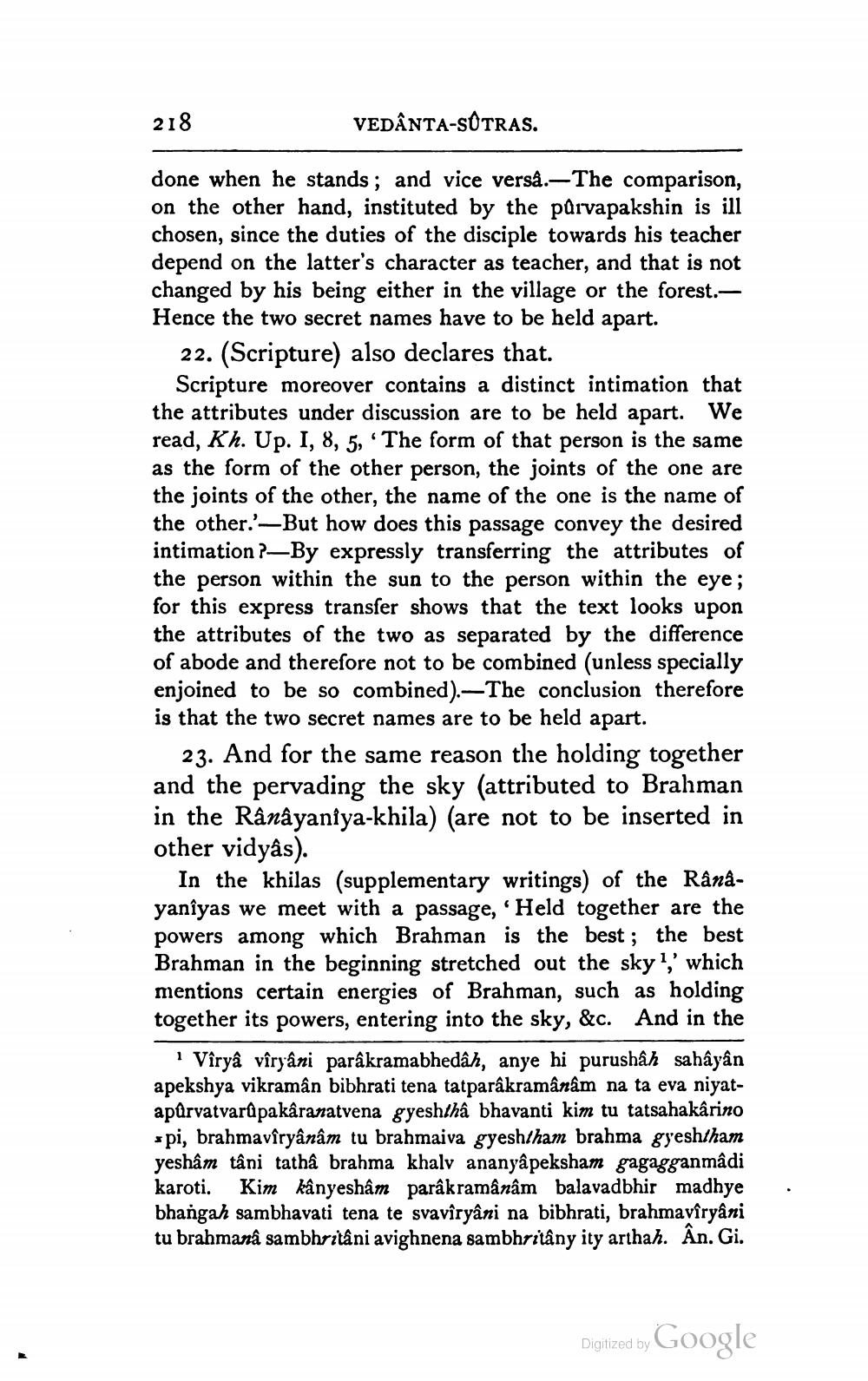________________
218
VEDÂNTA-SOTRAS.
done when he stands; and vice versa.- The comparison, on the other hand, instituted by the pūrvapakshin is ill chosen, since the duties of the disciple towards his teacher depend on the latter's character as teacher, and that is not changed by his being either in the village or the forest.Hence the two secret names have to be held apart.
22. (Scripture) also declares that.
Scripture moreover contains a distinct intimation that the attributes under discussion are to be held apart. We read, Kh. Up. I, 8, 5, 'The form of that person is the same as the form of the other person, the joints of the one are the joints of the other, the name of the one is the name of the other.'-But how does this passage convey the desired intimation 7—By expressly transferring the attributes of the person within the sun to the person within the eye; for this express transfer shows that the text looks upon the attributes of the two as separated by the difference of abode and therefore not to be combined (unless specially enjoined to be so combined).—The conclusion therefore is that the two secret names are to be held apart.
23. And for the same reason the holding together and the pervading the sky (attributed to Brahman in the Rânâyaniya-khila) (are not to be inserted in other vidyâs).
In the khilas (supplementary writings) of the Rânayanîyas we meet with a passage, 'Held together are the powers among which Brahman is the best; the best Brahman in the beginning stretched out the sky ?,' which mentions certain energies of Brahman, such as holding together its powers, entering into the sky, &c. And in the
Vîrya vîryâni parâkramabhedâh, anye hi purushầh sahâyân apekshya vikramân bibhrati tena tatparâkramânam na ta eva niyatapūrvatvarûpakâranatvena gyeshtha bhavanti kim tu tatsahakarino spi, brahmavíryânâm tu brahmaiva gyeshtham brahma gyeshtham yeshâm tâni tatha brahma khaly ananyâpeksham gagagganmâdi karoti. Kim kânyeshâm parâkramânam balavadbhir madhye bhangah sambhavati tena te svavîryâni na bibhrati, brahmavîryani tu brahmanâ sambhritâni avighnena sambhritâny ity arthah. An. Gi.
Digitized by
Digitized by Google




